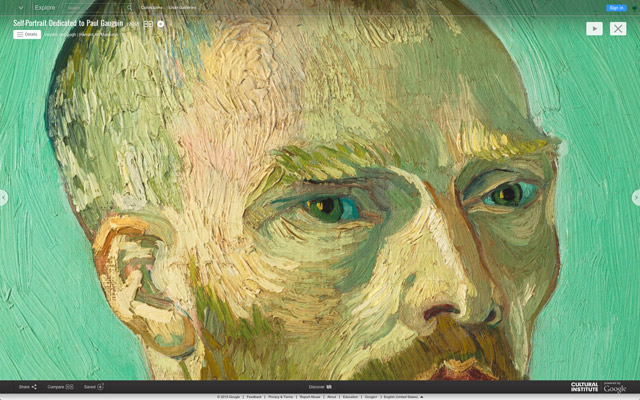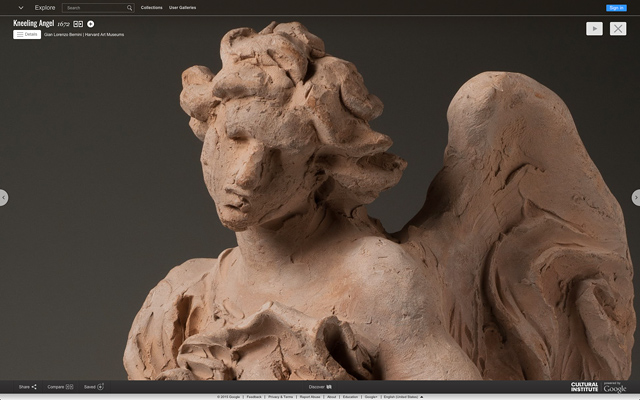If you’ve ever wanted to study Vincent Van Gogh’s Self-Portrait Dedicated to Paul Gauguin alongside some of the artist’s other self-portraits, or to compare Bernini’s terracotta models with his completed sculptures, you’re now in luck. Images of more than 1,000 objects from our collections have just been added to the Google Cultural Institute, an online resource dedicated to providing global access to a broad range of cultural material from art institutions, heritage sites, archives, and more.
“The Google Cultural Institute opens another door for people around the world to learn about our museums and our collections,” said Jeff Steward, the museums’ director of digital infrastructure and emerging technology (DIET).
Through the Cultural Institute’s Art Project, visitors can explore individual works by institution, or search by a range of attributes such as artist or title. High-resolution images and a custom-built zoom viewer allow for the study of minute details, making the tool a powerful means of close looking—similar to what is encouraged by the museums’ own website and searchable collections database of approximately 250,000 objects.
Visitors can also draw connections and make comparisons across all the collections on the Cultural Institute site, which currently includes more than 170,000 objects from over 800 institutions in 60 countries. Any of the Harvard Art Museums’ 1,061 objects on the site could be viewed alongside art from the Hong Kong Maritime Museum or the Street Art Museum Amsterdam, for instance. Google’s automated, cross-institutional tagging and mapping system, as well as interactive gallery-building and group discussion tools, also add a new dimension to virtual art-browsing.
The museums’ curatorial staff chose objects that would offer a representative sampling of our entire holdings. That means there are longtime visitor favorites along with new acquisitions, and ancient Mediterranean works as well as modern American art. The team at DIET created and submitted all the images to Google.
“We are excited that the Google Cultural Institute will help us push the limits of our own collections and data,” Steward said. The platform’s accessibility and range complement the Harvard Art Museums’ educational mission and, ultimately, “help to increase the serendipity and joy of looking at art.”






